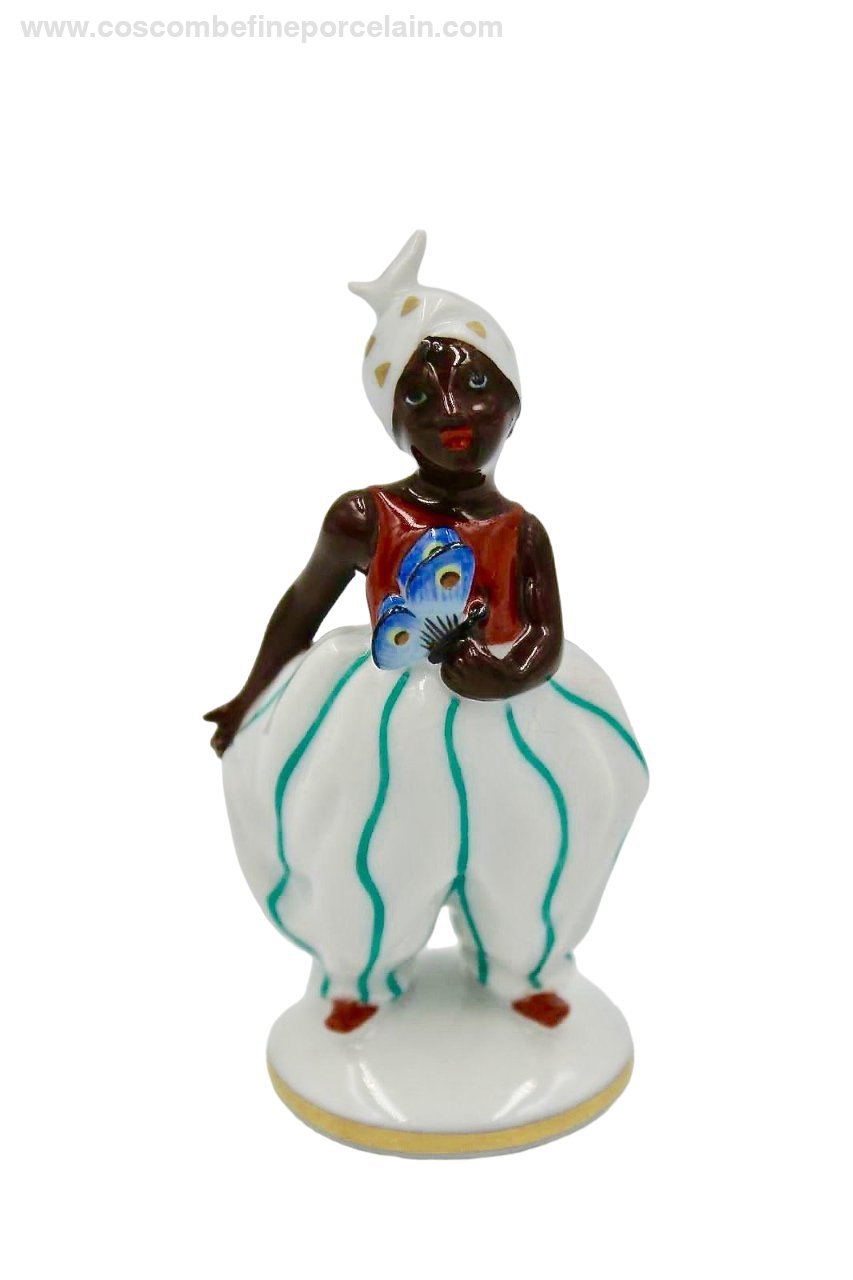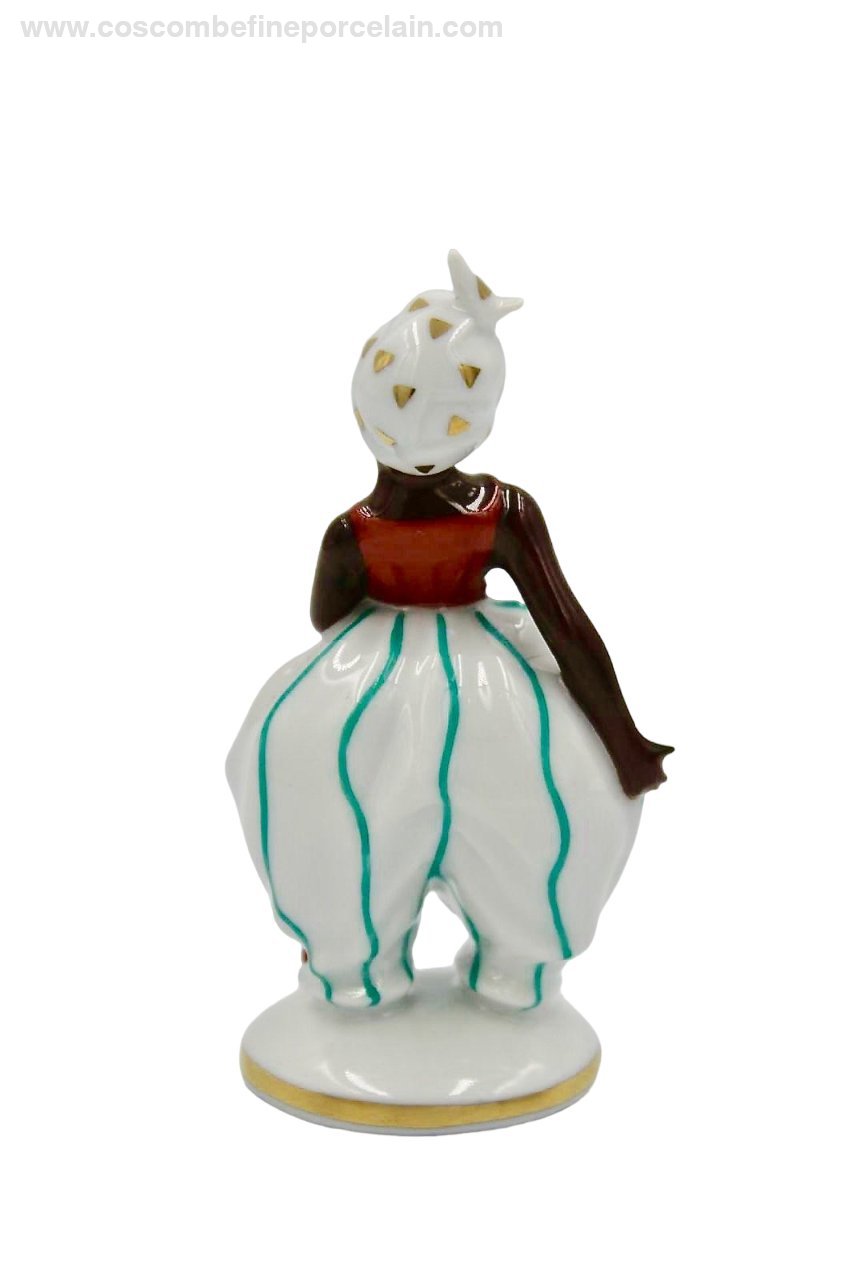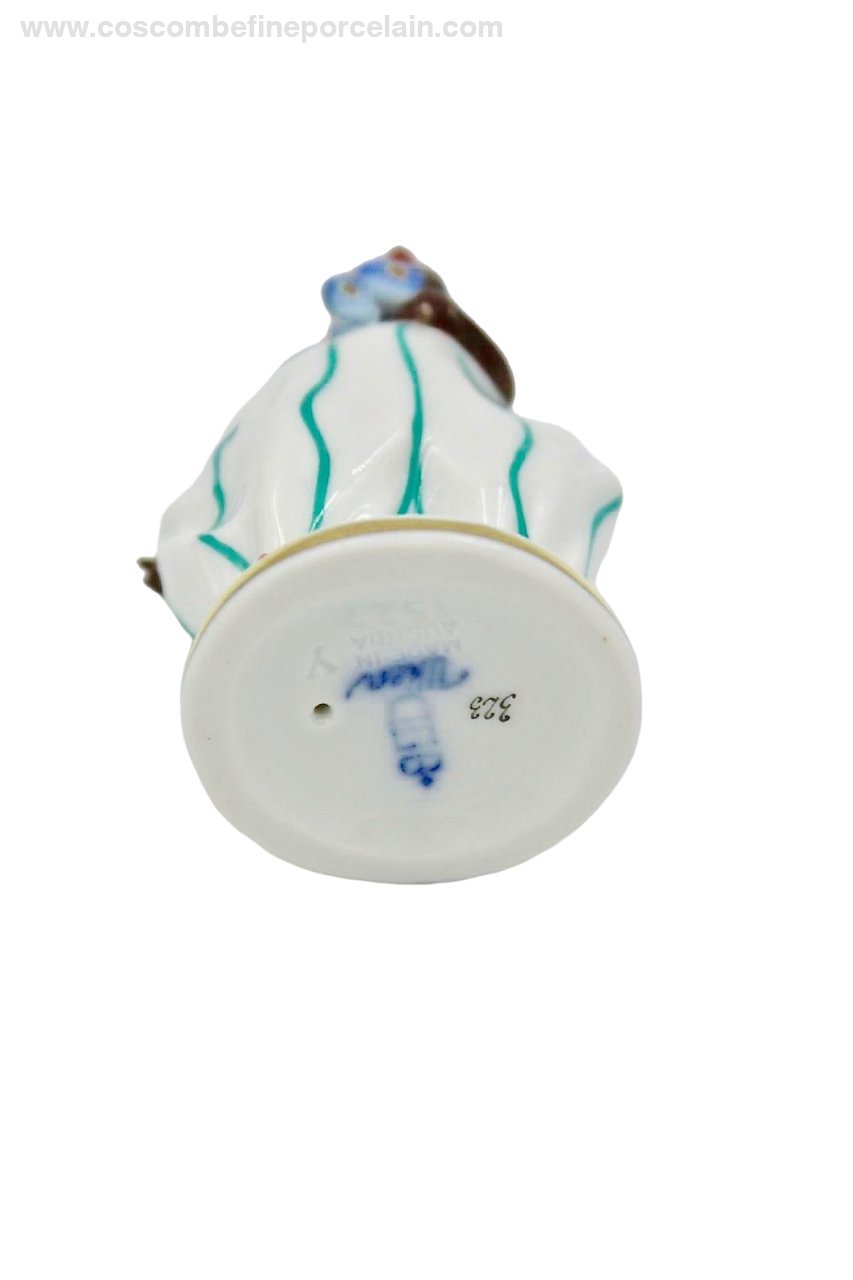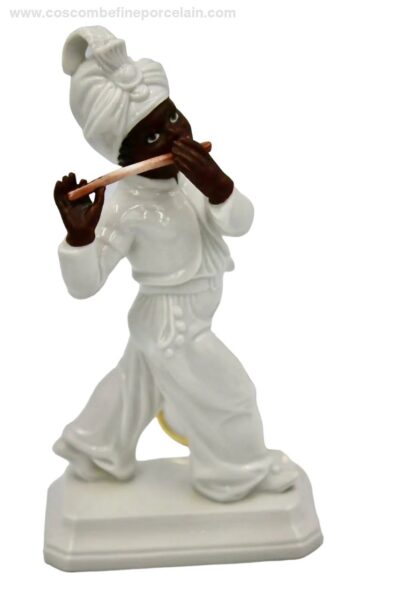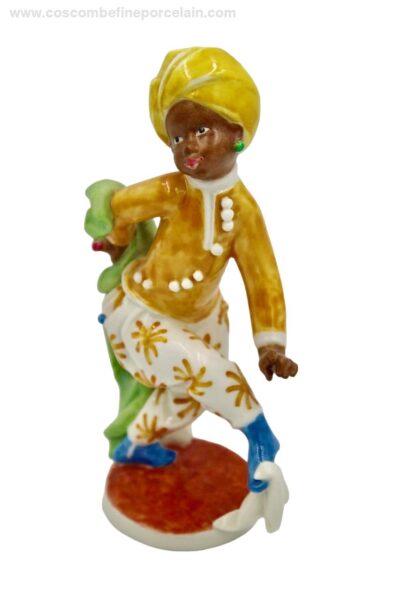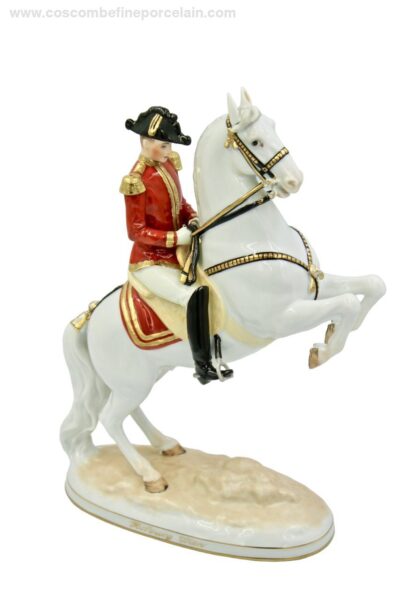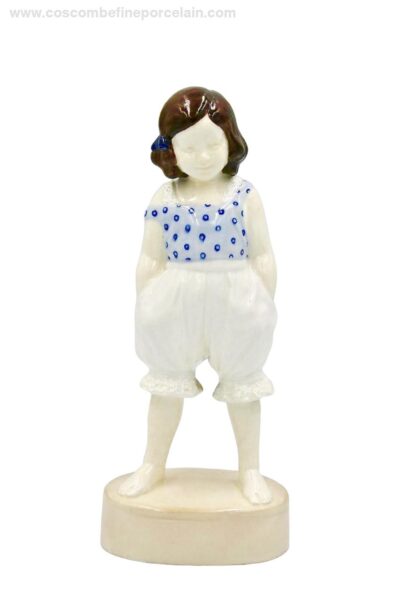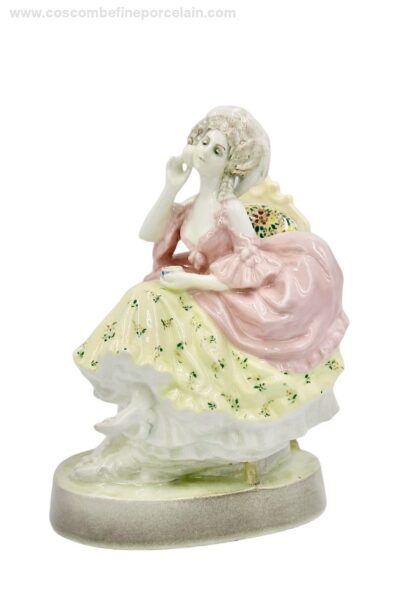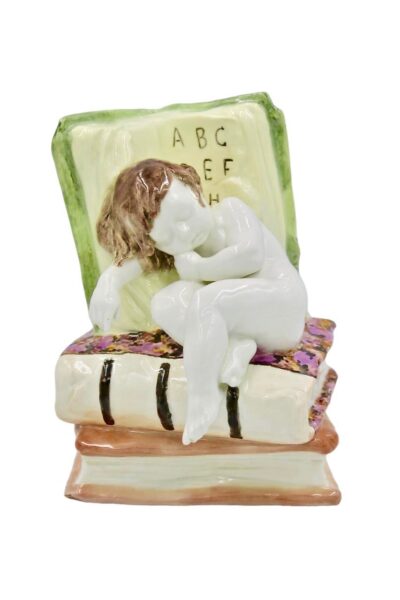Moor
£265.00
An extremely rare art deco figurine of a Moor made in Austria by Augarten from a design by Mathilde Jaksch.
The very finely detailed figure is hand made, painted and gilded to achieve the highest quality.
Underneath: underglaze-blue crown over a beehive Wien Austria, mark of the Porcelain Manufactory Augarten;
Model # 323
Height 8 cm
Condition: Excellent, no damages to the porcelain, checked with UV light.
More detailed photos can be emailed please use the contact us form.
In stock
